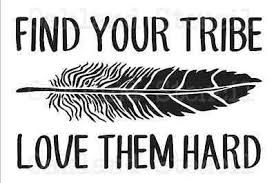
There is no power for change greater than a community discovering what it cares about. – Margaret J. Wheatley
Found in the pages of the National Library of Medicine comes a study simply known as the Rosetta effect. The study was conducted in the small town of Roseto, Pennsylvania between 1955-1965.
The study found striking differences in mortality rates from myocardial infarction in a homogeneous Italian-American community and small towns located nearby. The differences disappeared slowly over time as Roseto became more “Americanized”.
The study found that people with stronger social relationships had a 50% higher likelihood of survival than those with weaker social relationships. Roseto teaches us the importance of social connection to our health and well-being.
While these results may not necessarily come as a surprise, it’s important to note that the connection between community and our well-being transcends the boundaries of any physical address. Being connected to a caring community is the goal of any organization that desires to succeed.
In the workplace, we have coined terms such as workplace culture, corporate environment, corporate character, organizational culture, corporate values, and more to describe what decades ago we simply called community.
As leaders, we have often used the vernacular of culture to represent or replace the word for community. And while the intentions are good, the differences are striking.
Scott Perry, the Chief Difference-Maker at Creative on Purpose says, “Culture is driven by ideas and actions. Community is driven by proximity. The people you find yourself surrounded by define your community.” Allow me to take it a step further – your community determines and drives your culture. Without a strong, close-knit community, your culture will not thrive. Workplace culture without community will be relegated to nothing more than slick posters hanging on a wall that mean nothing.
To get community and culture right, what ought to be the focus of the leader? Here are a few suggestions.
Prioritize your community standards
When the standards of your community are established it will be much easier to determine who has proximity. It won’t be a fit for everyone. But establishing your community standards is a non-negotiable because too much is riding on it. Building your team based on your community standards sets the foundation for your culture. Building culture before building community is getting the cart before the horse. A culture that flows out of a shared community will more closely align with the culture you want to create.
Promote community building
The coming together of your team around a shared set of values is the springboard of community that propels your culture. It’s important to be intentional about strong and healthy relationships. Creating a community of people who care for and look out for one another is essential. Proximity does you no good unless your people build healthy relationships and know where they are going and why. Be a leader who connects people, builds bridges, and models what being a good neighbor looks like. Your community and your culture depend on it. Click To Tweet
Practice community daily
Practicing community simply comes down to living out the standards of community that you have defined and consequently applying them to your ideas and actions (culture). Your culture will be strong and continue to get stronger as the right people gain proximity.
Practicing community in the context of culture is about showing up, being there for one another, being appreciative and showing gratitude, focusing on solutions, celebrating wins, and fostering an environment of growth and opportunity.
Final Thoughts
Coretta Scott King observed, “The greatness of a community is most accurately measured by the compassionate actions of its members.” As you desire to build a strong culture, focus first on community. When you get community right, you can get your culture right.
©2024 Doug Dickerson




